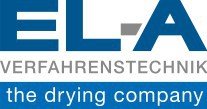BELT DRYER FOR WOOD SHAVINGS,
WOOD CHIPS AND WOOD PELLETS
Belt dryer for drying of wood shavings, wood chips and other raw materials for pellet production.
Belt dryer types SBT 25 and SBT 60 in modular design was developed especially for drying of wood shavings, wood chips and similar products for pellet industry.
This drier can be used too for another products coming from the group of renewable raw materials like biomass and digestates.
Using waste heat coming from biogas plant can increase its efficiency.
Function:
Wood shavings will be conveyed by screw conveyor into the belt feeder which distributes wood shavings or wood chips on belt width very uniformely.
The product layer established evenly on the dryer belt (perforated synthetic material) is transported and dryed by passing the drying zones. To dry, an off gas fan is sucking fresh air through thermal heat exchangers – on top of the drying zones mounted – these will heat up air. Then heated up air will follow the pressure depression, caused by the off gas fan, through the product layer – thereby water of product will be evaporated and drying air cooled down and loaded with moisture.
Further the air passes conveyor belt, collecting pipe work, off gas fan and after that will be discharged on environment at top of dryer building.
The speed of the dryer belt and with that the residence time of the product can be varied depending on need. Therefore a moisture measurement device will be installed at product discharge section to ensure quality of final moisture content. This measurement controls belt speed and reduces or increases (if necessary) rpm of distributing screw on product feed section.
At the end of the dryer the dryed product on the belt falls into a discharge screw and is submitted to customer’s transportation device.
Advantages:
- Simple transport of the preassembled modules by standard container measurements
- High pre-assembling grade at fabrication site, reduces assembling time and costs on customer site
- Use of waste heat on low temperature standard.
- Gentle product drying.
- Low emission data.
- Uncomplicated operation and maintenance
- Automatic mode.
- Low maintenance costs.

